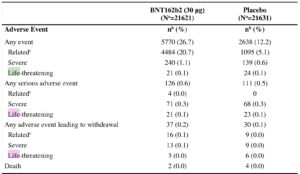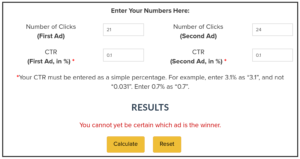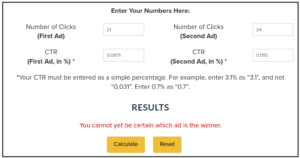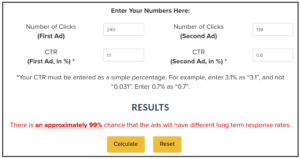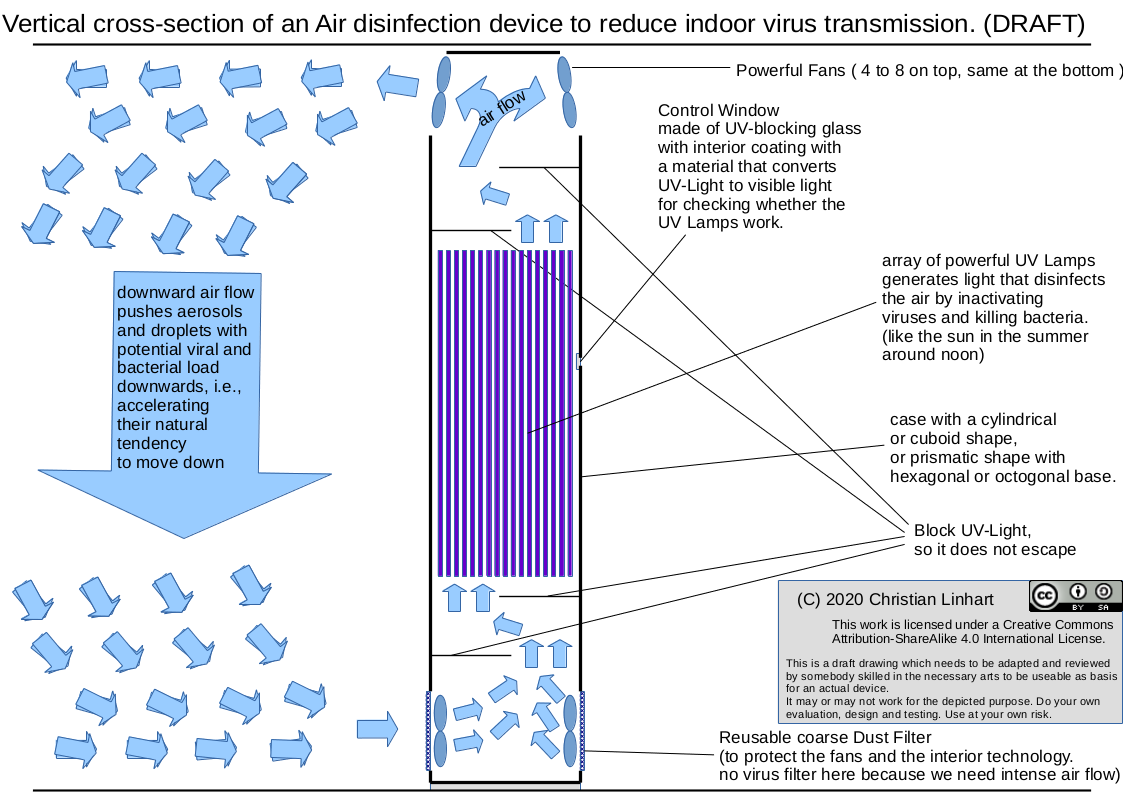Zur Zeit gibt es immer wieder Fälle, wo beim Impfen vor Ort (zB Altersheim) Impfdosen übrigbleiben.
Diese Impfdosen müssen schnell, am besten gleich vor Ort, verimpft werden, damit sie nicht verderben.
Idealerweise sollten diese Impfdosen an Menschen mit hohem Covid-19 Risiko (zB Immungeschwächte) verimpft werden.
Es gibt jedoch bisher keinen Mechanismus, wie diese Menschen kurzfristig erreicht werden können, sodass Sie dort hinkommen können.
Daher werden die Impfdosen dann an Menschen verimpft, die gerade vor Ort sind, aber kein erhöhtes Impfrisiko aufweisen.
Als Lösung wird eine Website (und evtl App) vorgeschlagen, wo sich Impfwillige anmelden können, die daran interessiert sind, bei diesen übriggebliebenen Impfdosen dranzukommen. Und einen Möglichkeit, über die diese Menschen informiert und kurzfristige Termine vergeben werden. Der Einfachheit halber kann das durch Telefonanrufe durch das Impfteam erfolgen.
Vergabekriterien, Auflösung von Zielkonflikten
Die Vergabe der Impfdosen soll, wenn möglich, zwei Kriterien erfüllen: Es soll keine Impfdosis überbleiben und es sollen Menschen mit höherem Covid-19 Risiko bevorzugt drankommen. Bzgl dieser beiden Kriterien gibt es grundsätzlich einen Zielkonflikt, zB, was passiert, wenn jemand mit höherem Risiko nicht erreichbar ist? Wie lange wartet man?
Dieser Zielkonflikt soll so aufgelöst werden, dass Menschen mit höherem Risiko zuerst informiert werden. Die Vergabe der Impfdosen erfolgt aber nach Reihenfolge der Terminbestätigung. D.h., wenn jemand mit dem höchsten Risiko sofort reagiert und einen verbindlichen Termin bestätigt, dann kommt er/sie dran. Wenn jemand mit dem höchsten Risiko die Information übersieht bzw den Anruf verpasst oder verspätet reagiert, haben andere, die später informiert werden, auch eine Chance. Dadurch wird sichergestellt, dass kein Impfstoff verlorengeht.
Wenn die Impfdosen über das System nicht vergeben werden konnten, dann können und sollten sie natürlich an vor Ort anwesende Personen verimpft werden. Das kann dann auch guten Gewissens geschehen, weil ja die Möglichkeit ausgeschöpft wurde, Menschen mit hohem Risiko den Vortritt zu lassen.
Schneller Vergabeprozess, der für mobile Impfteams geeignet ist
Dieser Vergabeprozess muss relativ schnell vor sich gehen, weil es sich in der Regel um mobile Impfteams handelt, die nicht allzulange vor Ort sind.
D.h. innerhalb eines Zeitraums von 10min bis 30min sollten alle relevanten Impfwilligen informiert sein, und innerhalb von 30min bis 1h sollten alle Termine vergeben worden sein. Termine werden kurzfristig sein, d.h. am selben Tag und in der Regel auch innerhalb des Tages sehr kurzfristig.
Eine einfache Methode, Impfwillige zu informieren, wären Telefonanrufe durch das Impfteam, wo dann auch gleich die Terminvereinbarung vorgenommen werden kann.
Dabei können dann auch weitere Dinge geklärt werden, wie zB Hygienevorschriften vor Ort etc.
Konzept
Anmeldung von Impfwilligen
Impfwillige können auf der Website/App einen Account einrichten. Das sollte niederschwellig und einfach möglich sein.
Daher sollte dafür auch alternativ die Anmeldung mit Accounts von großen Websites wie Facebook, Twitter, Google möglich sein, die ein Authentifizierungsservice anbieten.
Dann können folgende Daten ausgefüllt werden, die nötig für das Funktionieren des Systems sind:
- Name
- Zumindest ungefähre Angabe zum Wohnort bzw Aufenthaltsort. Das ist nötig, weil es ja nur sinnvoll ist, wenn es in der Nähe ein solches Impfteam mit übriggebliebenen Dosen gibt.
- Telefonnummer(n)
- Ob man mit der ersten Dosis schon geimpft wurde.
- Optional: Tageszeiten und Tage, wo man bereit ist bzw verhindert ist
- Angabe, ob das Impfteam die Telefonnummer einsehen darf und anrufen darf
- Angabe, wie weit man anreisen kann. Evtl auch ob mit Öffi oder mit Auto. Das ist auch nötig, damit das System feststellen kann, wer informiert werden soll.
Diese Angabe kann zB eine Liste von Orten bzw Postleizahlen sein, wo man hinkommen kann. Das ist evtl praxisnäher als ein km-Radius.
- Angaben zum Covid-19 Risiko:
Welche Risikofaktoren liegen vor?
D.h. zB Alter, relevante Erkrankungen (zB angeborene Immunschwäche), bei Übergewicht: Körpergröße und Gewicht, …
Aber auch, welches Ansteckungsrisiko liegt vor, zB berufliche Kontakte, Familiäre Kontakte (selber Haushalt, anderer Haushalt), …
Daraus berechnet das System eine Bewertung des Gesamtrisikos und damit die Priorisierung.
Grundsätzlich sowenig Daten wie möglich abfragen. Nur was für die Risikobewertung relevant ist.
Alternativ: Bestehende Daten über Risikogruppen bei Krankenversicherungen nutzen
Eventuell sind diese Daten bereits bei Krankenversicherungen vorhanden. Siehe diesen Tweet.
D.h. dann könnten die Krankenversicherugen gemeinsam ein entsprechendes System betreiben oder das nicht als Computerssystem sondern als Hotline umsetzen, was vermutlich schneller umsetzbar ist, als Software zu entwickeln.
Natürlich bzgl Datenschutz sauber aufgesetzt. Das setzt evtl die Zustimmung der Impfwilligen voraus, die ja eingeholt werden kann.
Die Umsetzung könnte vom Dachverband der Sozialversicherungsträger erfolgen bzw koordiniert werden, dann dort sind alle Krankenversicherungen vertreten.
Anmeldung von Impfteams
Die Anmeldung eines Impfteams kann durch ein Mitglied des Impfteams oder durch eine(n) MitarbeiterIn der Einrichtung erfolgen, wo geimpft wird.
Für einen Impfeinsatz sollen folgende Daten erfasst werden:
- Ort (genaue Adresse)
- Telefonnummer
- Datum, an dem geimpft werden kann (meistens wird das dann der aktuelle Tag sein)
- Anzahl der überschüssigen Impfdosen. (kann später angepasst werden, falls nötig)
- Zeitraum, während dem geimpft werden kann.
- evtl auch: Wieviele Impfungen gleichzeitig?, Wieviel Zeit soll pro Impfung eingeplant werden?
Ablauf
Sobald bei einem Impfeinsatz überschüssige Dosen im System erfasst wurden, wird dem Impfteam eine nach Covid-19 Risiko sortierte Liste von Impfwilligen, die sich in der Nähe befinden und daher auch kommen könnten, mit Name und Telefonnummer angezeigt.
In dieser Reihenfolge zwecks Terminvereinbarung versucht werden diese anzurufen, solange bis Termine für alle Impfdosen vergeben sind.
Wenn ein Termin dann entgegen der Vereinbarung nicht wahrgenommen wird, und das auch telefonisch nicht geklärt werden kann, dann kann das im System erfasst werden und es wird ein(e) andere(r) Impfwillige(r) angezeigt, der/die ersatzweise zur Terminvereinbarung angerufen werden kann.
Schutz vor Missbrauch und Betrug
Das angegebene Risiko von Impfwilligen kann durch das Impfteam vor Ort im Rahmen des ärztlichen Vorgesprächs geprüft werden bzw vielleicht auch schon während des Telefongesprächs zur Terminvereinbarung.
Die eingegebenen Risikofaktoren und Berechnung des Risikos kann der/die Impfwillige auch ausgedruckt mitnehmen oder am eigenen Handy anzeigen, o.ä., um Missverständnisse zu vermeiden.
Anmeldungen durch Leute, die gar nicht impfwillig sind bzw auch unter Angabe falscher/erfundener Identität: Kann bei einem niederschwelligen Angebot technisch nicht unterbunden werden. Ein guter Teil davon kann vermutlich im Rahmen der telefonische Terminvereinbarung erkannt werden.
Aber auch: Hinweis auf eventuelle Strafbarkeit falscher Angaben.
Anmeldungen als Impfteam von Leuten die gar kein Impfteam vertreten bzw auch unter Angabe falscher/erfundener Identität:
Anmeldung mit Bürgerkarte/Handysignatur sollte dieses Risiko reduzieren. Zumal dann im Missbrauchsfall auch die Identität der Leute feststeht, die solche Anmeldungen vornehmen. Eventuell auch Überprüfung durch eine staatliche Stelle, die die Möglichkeiten hat, dies zu prüfen zb weil sie weiss, welche Impfteams es gibt.
Eventuell kann eine solche Stelle bereits im Vorfeld die Berechtigten freischalten.
Das müsste alles sehr rasch gehen, damit keine Zeit verloren geht.
Frage: Ist das Erfordernis Bügerkarte/Handysignatur für Impfteams realistisch?
Oder muss auch die Anmeldung von Impfteams niederschwelliger möglich sein?
Wie kann dann Missbrauch vermieden werden?
Datenschutz
Da hier sensible personenbezogene Daten wie zB Erkrankungen erfasst und verwaltet werden ist Datenschutz sehr wichtig.
Das Impfteam sieht eine Liste derjenigen Impfwilligen, die zwecks Termin angerufen werden möchten.
Diese Liste beinhaltet nur den Namen und/oder eine Anmeldenummer und das errechnete Gesamtrisiko bzgl Covid-19.
Das Impfteam hat über das System keinen Zugriff auf die Liste der Risikofaktoren bzgl Covid-19.
Risikfaktoren für Covid-19 und Kontraindikationen bzgl der Impfung sind dann vor Ort direkt im Rahmen des ärztlichen Vorgesprächs zu klären.
Das Impfteam kann sich auch eine Liste der vereinbarten Termine anzeigen lassen.
Sobald die Impfung erfolgt ist, soll das im System erfasst werden, durch das Impfteam oder die geimpfte Person.
Danach werden alle Daten des/der Impfwilligen als gesperrt markiert und sind nicht mehr von außen zugreifbar.
Innerhalb eines definierten Zeitraums danach werden alle Daten des/der Impfwilligen dann auch gelöscht.
Umsetzung
Information über Impftermine durch Telefonanruf durch das Impfteam oder über Web-Pushnotification oder App.
Alternativ, bei entsprechend Budget, auch automatische SMS. (Evtl oder Telefonanruf durch Callcenter.)
Zuerst wird nur die telefonische Terminvereinbarung durch das Impftteam unterstützt.
Das ist eventuell ohnehin ausreichend, sodass die anderen Methoden gar nicht implementiert werden müssen.
Technische Umsetzung
-
Variante 1: die Bundesländer könnten eine entsprechende Funktionalität in ihre Systeme zur offiziellen Anmeldung der Impfung einbauen, wenn das dort rasch möglich ist. (d.h. bis max 10. Februar 2021 im Echtbetrieb, besser deutlich früher)
Das hätte folgende Vorteile:
- dass die betreffenden Daten dort ohnehin erfasst werden müssen,
- dass man sich nicht in zwei Systemen anmelden muss,
- und dass nach einer solchen vorzeitigen Impfung aufgrund übriggebliebener Dosen gleich automatisch der offizielle Impftermin storniert werden kann.
In Wien ist das anscheinend schon umgesetzt, siehe diesen Tweet.
- Variante 2: Umsetzung als eigenes System.
Das hätte eventuell den Vorteil, dass es schneller umsetzbar ist als eine Erweiterung der Anmeldesysteme der Länder.
Zuerst wird es als Website realisiert, das dies schneller umsetzbar ist. (Später evtl auch als Handy-App. Aber das ist evtl gar nicht nötig.)
Authentifizierung über Bürgerkarte/Handysignatur erfolgt technisch mittels MOA-ID.
Serverseitige Technik: zB Server mit Tomcat, Persistenz mit Cassandra.
Damit ist Redundanz und Skalierbarkeit gegeben.
Ein Parallelbetrieb von mehreren Systemen mit dieser Funktionalität soll vermieden werden, weil es dann schwierig wird, die Priorisierung zu gewährleisten.
